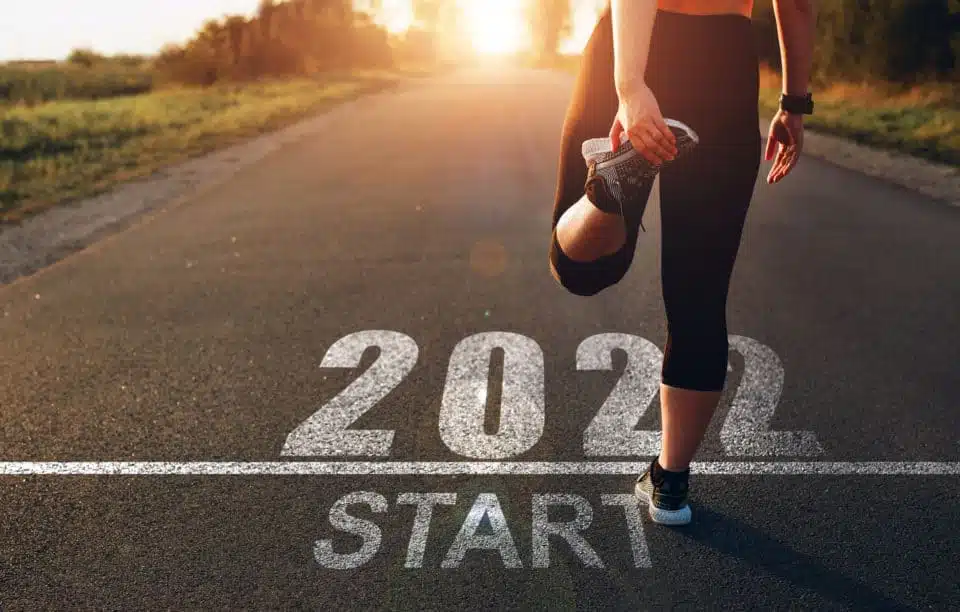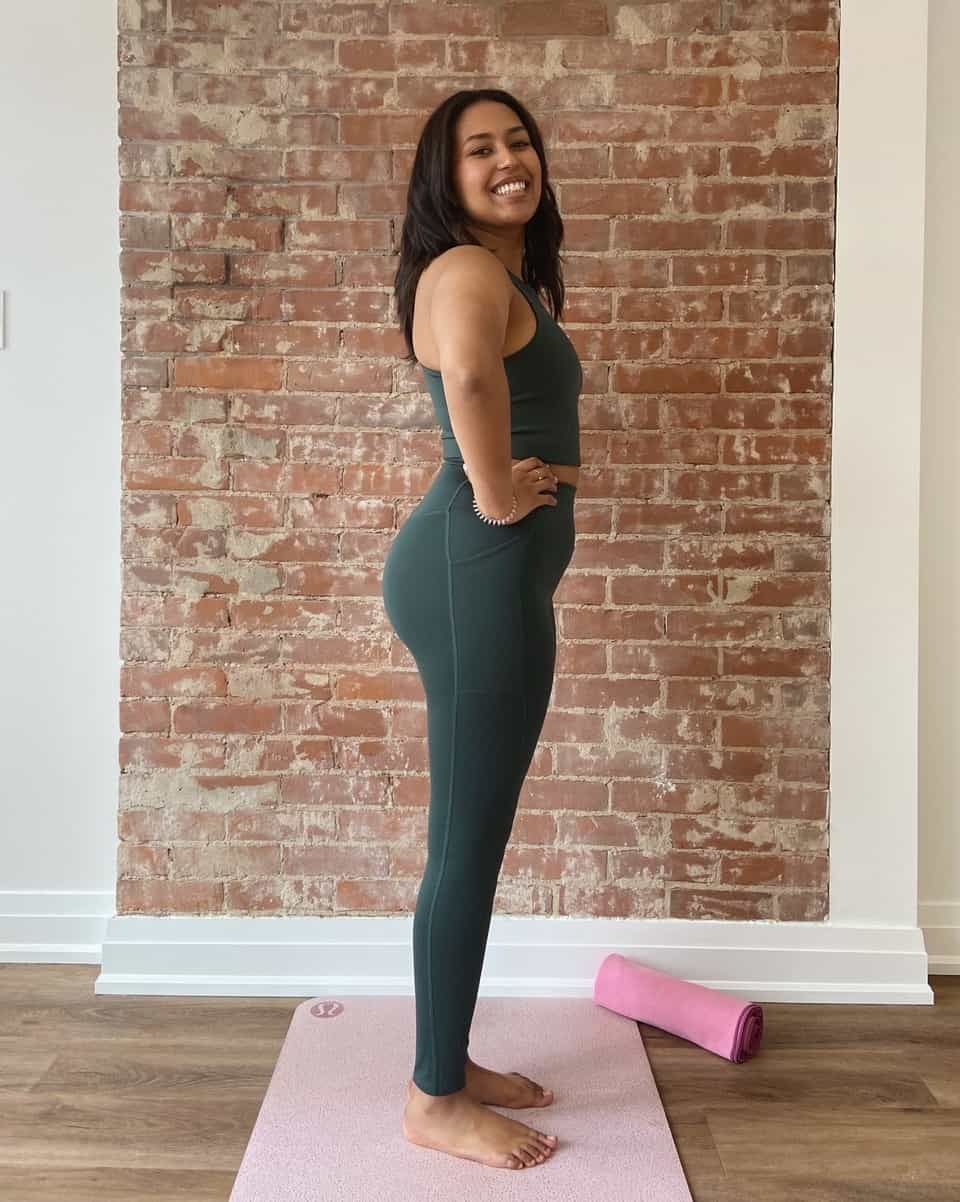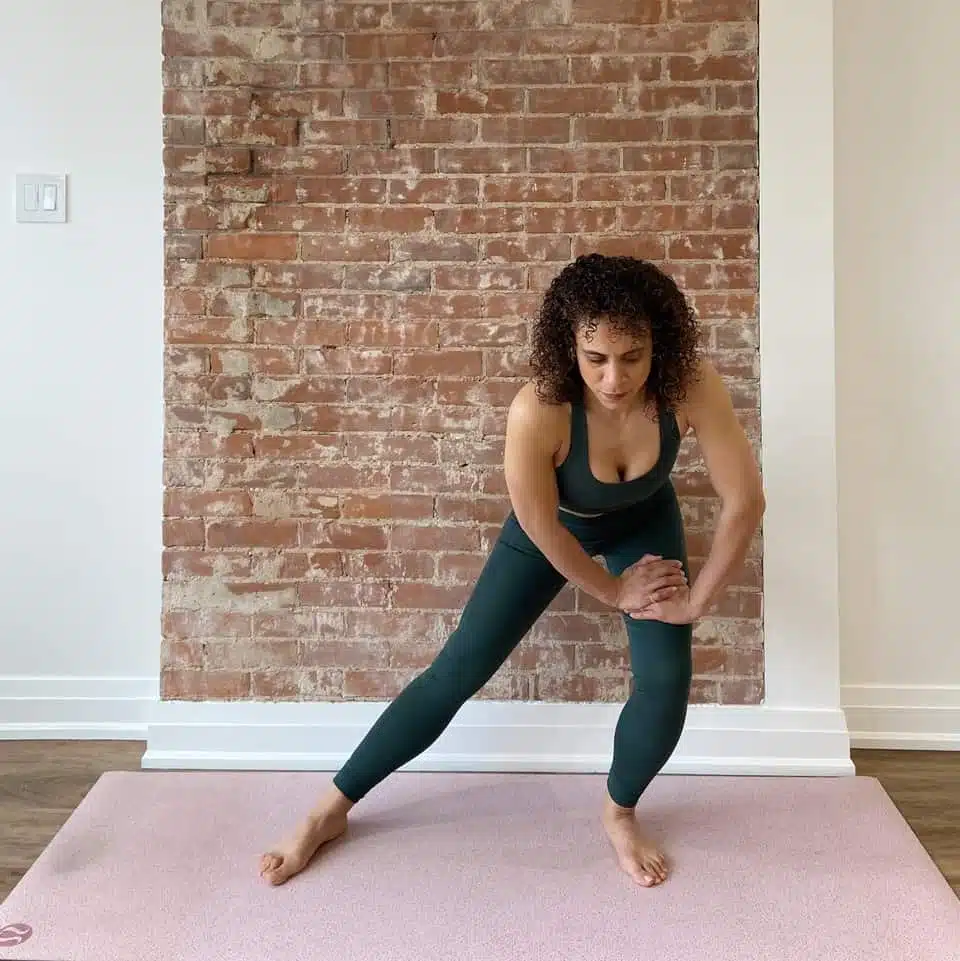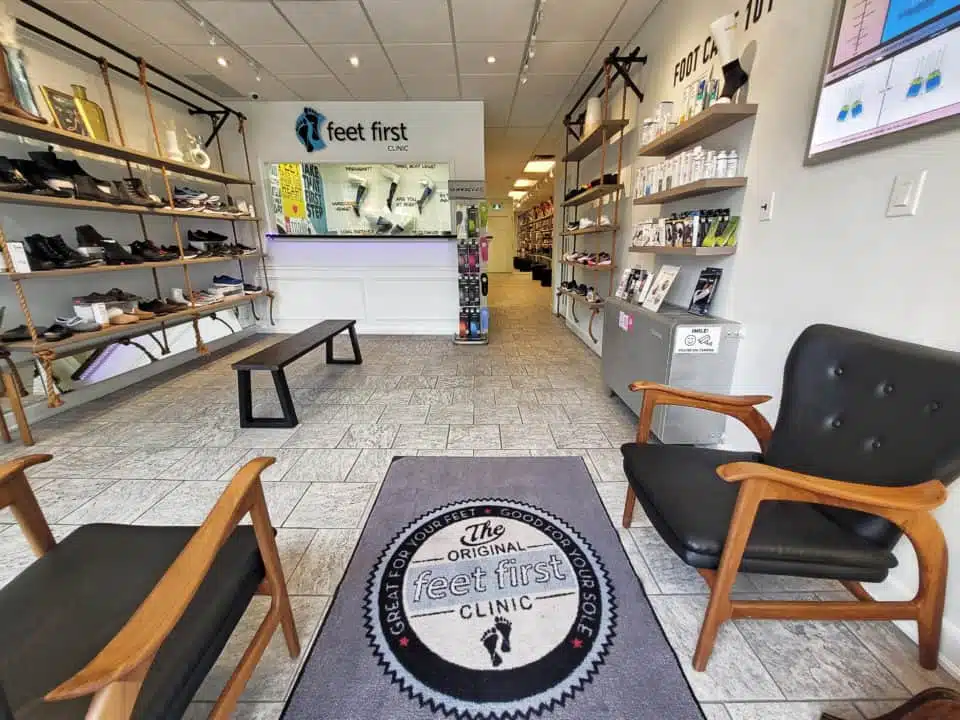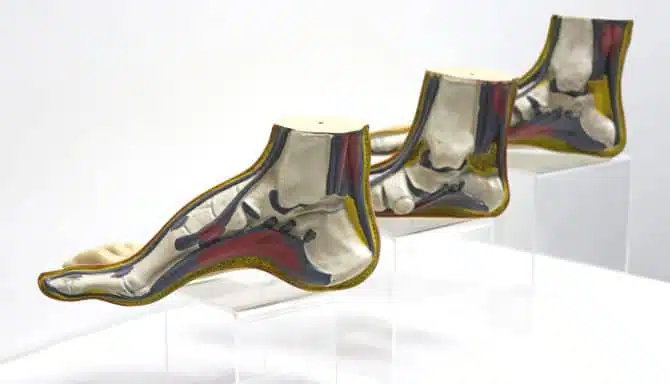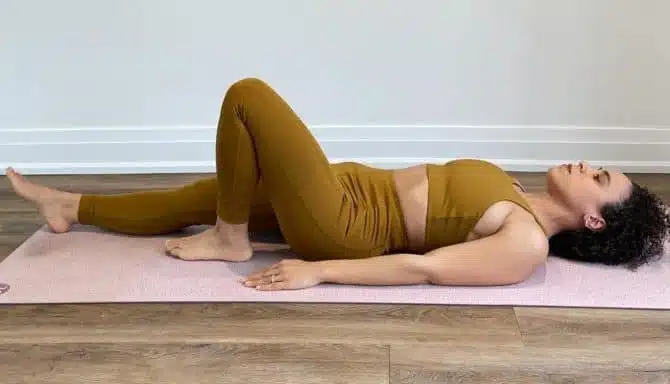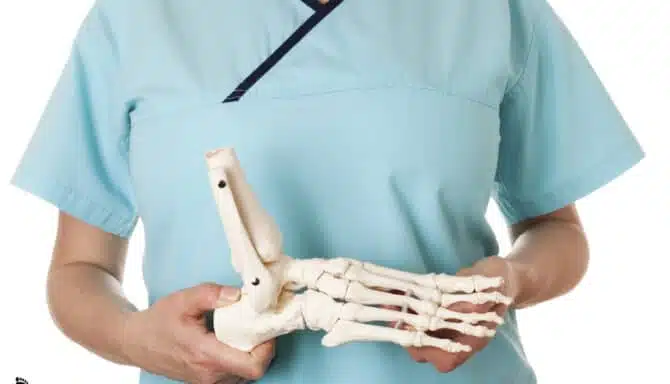New Year’s resolutions can be an excellent way to determine what goals we want to achieve over the next year. After setting those goals, the next step is usually figuring out how to make those dreams a reality. It takes diligence and effort, but it’s also essential to make sure your milestones don’t seem too impractical.
One ever-so-common New Year’s resolution is to get into shape and become more physically active. Many people have become more sedentary due to working from home during the COVID-19 pandemic. Furthermore, countless people struggle with foot conditions and other barriers that may make physical activity seem intimidating or impossible. With images of super athletic, perfectly toned bodies littering fitness sites all over the internet, it can sometimes feel like people who are naturally athletic hold a monopoly over physical fitness, and people with disabilities, chronic pain and health issues are to look elsewhere.
Luckily, this isn’t the case. There are in fact many steps you can take towards becoming more active – even with foot pain or mobility issues.
Feet First is here to let beginners and people with all kinds of health concerns know that a healthy, active lifestyle is possible for anyone – regardless of your physical condition or limitations. Fitness doesn’t have to mean going to the gym everyday, losing weight or getting a Pelaton bike – it comes in many shapes and forms, and can be adapted and modified to suit your body and medical needs.
To start your new year off the right way and help you reach your health goals, we have some simple tips to improve your lifestyle and keep your feet (and the rest of your body) feeling happy and healthy.
Find an Enjoyable Recreational Activity
Who says that being physically active can’t also be fun? Taking part in a new hobby that gets your heart pumping and your feet moving doesn’t have to be a chore. You can also mix it up and enjoy a combination of your fave activities. This helps you not drag your feet and dread your workouts! Here are a few ideas:
- Go for walks or runs (make sure you have supportive footwear!) while listening to your favourite music or podcasts. You can also check out this article on getting 10,000 steps per day.
- Learn a new skill while exercising by taking a dance class, learning yoga or joining a sports team.
- Involve a friend! Doing activities with a friend doesn’t just make it more fun; it can also keep you both motivated to stay the course.
- Cardio can become one of your favourite passions if you find a suitable machine – and it doesn’t have to be a treadmill! If you have joint pain, you can invest in your own elliptical or use the ones at the gym. Ellipticals are one the most adaptable and accommodating machines for people with foot and joint pain: You can reap the benefits of running without the heavy impact on your joints or placing too much pressure on certain parts of your feet (ball of foot, heel, etc).
Get Organized and Determine a Plan of Action
Regardless of if you want to start going to the gym or exercising from home, you’ll need to be smart and set realistic expectations for yourself. Beginners can often overwhelm themselves quickly with unattainable goals and end up giving up before they even get started.
Sometimes, the best way to achieve your New Year’s resolutions is to break them up into several attainable resolutions. This helps your goals not seem so overwhelming that you let your resolution fizzle out before February hits!
Here are some ways you can avoid falling into that trap:
- Take the time to write down what your goals are. Are you looking to manage your pain? Do you want to feel stronger and more agile? Determining specific goals sets the foundation for the rest of your physical activity journey. One great way to do that is to set SMART goals. SMART goals are more than just being “smart”; it’s actually an acronym (Specific, Measurable, Achievable, Relevant, Time-bound) and super-effective goal-setting tool that helps you actually achieve the goals you set. To learn more about SMART goals and how to organize your goal-setting process, check out VeryWellMind’s guide to setting SMART goals. You can also google “SMART goals” to find different worksheets to help you out.
- Start small. When you start slowly and comfortably, your range of motion, strength and endurance will eventually follow. For example, when performing strengthening exercises, make sure you use low weight settings to start – or no weight at all (just doing the motions and focusing on form is a great starting point). If you start with too much weight or too high of an intensity, you can easily injure or strain your muscles, ruining your chances of hitting the gym next time. If you’re able, consulting with a personal trainer or fitness expert may be a good idea. You can also look online for several beginner workout routines or download a fitness app for beginners.
- Adapt the activity to suit your body and existing lifestyle. Your life probably isn’t going to get any less busy, so if you don’t have time to go to the gym everyday now, that likely won’t change in the new year. Instead, find a quicker activity that better accommodates your schedule. Likewise, if there’s an exercise that doesn’t work with your body’s limitations, modify the exercise so that it does. When embarking on your fitness journey, remember: adapt the activity to fit you, not the other way around. After all, we want something that is sustainable and achievable.
- Keep a journal. If you have a daily calorie-burning goal, you can write down how many calories you burn each day in a journal. You can also jot down the exercises you do every time you work out. This will help you keep track of your progress. If you prefer using your smart phone to a pen and paper, you can track this on a fitness app.
- Maintain a workout calendar. Healthline notes that beginners should exercise about two to three days per week. To make sure you’re getting those workout days in, you can create a workout calendar on your smartphone or somewhere in your home.
- Recover. You have to make sure you rest and don’t burn out. If you don’t rest for a few minutes in between sets, you can tire out far too quickly, not complete your goals for the day, and risk injury. In fact, rest periods help recover and build muscle. That’s why the second and third sets often feel easier than the first. It’s also why experts also recommend incorporating rest days into your workout schedule.
Don’t Forget Foot Care
A good foot care regimen is crucial for fitness beginners learning the ropes.
Naturally, you have to make sure you’re wearing shoes that fit snugly and offer arch support, cushioning, enough room and breathability.
Critical factors like stimulating blood flow, moisturizing and exfoliating are also important if you have any foot conditions.
It’s also important to make sure you regularly change your socks and watch how much your feet are sweating while you work out. Neglecting moisture build-up can lead to issues like athlete’s foot and fungal infections.
For more detailed info, you can check out the following Feet First Clinic articles on how to maintain foot care:
- 12 Years of Foot Care
- Top Recommended Products to Help With Your Winter Dry Feet
- 5 Amazing Foot Care Products From Gehwol
- The Best Shoes From ASICS
- Supportive Footwear For Your Workout
- Choosing The Perfect Winter Running Shoes
Incorporate a Stretching and Strengthening Routine
While you establish your new fitness routine, you should also set aside 5-10 minutes a day to do some stretches – and that includes the feet! Stretching your feet comes with a wide range of benefits, including improved flexibility, muscle tone, blood circulation and pain management . To optimize the benefits of stretching, try doing so before and (most importantly) after your workouts.
Neglecting to stretch after exercise can cause your muscles to tense up too quickly after working out and lead to stiffness and potentially injury. Foot stretches are also a good idea for people struggling with pre-existing foot pain.
Low-impact strengthening exercises can also work wonders for your feet, help enhance your workout performance and improve your range of motion. Strengthening exercises can also help with muscle soreness and reduce your chances of injuring yourself. According to Healthline, “strength exercises will allow your muscles to provide better support and protection for your foot as a whole.” This is super important for people with physical health concerns, like chronic pain and arthritis.
Now, when we talk about strengthening exercises, we don’t mean pumping iron at the gym – quite the opposite! Good fundamental strengthening exercises should require minimal effort and are often rehabilitation focused. Physiotherapists often prescribe these exercises for people with mobility concerns; you can even do them when you’re sitting on the couch watching TV!
For the best results, you should do strengthening exercises around 5-10 minutes, three times a week to start (you can do them at the same time as your foot stretches). Fitness beginners with chronic pain and arthritis (i.e.: rheumatoid arthritis, gout and osteoarthritis) should pay particular attention to strengthening exercises. This is because strengthening the muscles connected to the feet, ankles, and knees can help slow joint degeneration and reduce strain.
To learn some foot stretches and strengthening exercises, check out our Pinterest board! It’s full of simple routines that both help people with foot conditions and serve as excellent warm-ups.
Contact a Foot Clinic
Sometimes, we want to embrace an active lifestyle, but chronic foot or ankle pain can be an obstacle. That’s where seeing a licensed foot specialist can help. Chiropodists can treat many painful foot conditions and set the groundwork to help their patients ease into an active routine. The following are just a few ways chiropodists can help people with mobility problems start exercising:
- Custom Orthotics: Corrective shoe inserts moulded to fit your feet can go hand-in-hand with beginner exercise. During a custom orthotic assessment, your chiropodist can create the perfect pair for you. After inserting them into your favourite sneakers, you will soon notice how much they can compliment your exercise. Orthotics are especially beneficial if you have ankle stability problems and an abnormal gait. They can help regulate how you walk, position your feet more favourably and reduce pressure and strain on your feet while you exert energy. This helps manage and prevent any foot pain you have from getting worse after exercise. Specifically, people with flat feet, high arches, plantar fasciitis, bunions and other musculoskeletal foot conditions can exercise more comfortably with orthotics.
- Orthopaedic Shoes: A chiropodist can perform a footwear assessment at Feet First Clinic and recommend orthopaedic footwear to accommodate your needs. After your appointment, they can suggest specific shoes or write a prescription. At Feet First, you can select the perfect pair of orthopaedic footwear the same day as your appointment. Our footwear team can help you find a pair in line with your chiropodist’s recommendations.
- Chiropodists can discuss the benefits of high-quality over-the-counter insoles with patients. Many Superfeet insoles are designed to help with physical activity and easily fit into your workout shoes.
- At your assessment, your chiropodist can also prescribe exercises and stretches that will help your specific foot concerns
